Continuing my speed-dating-style immersion in Melbourne culture, I checked the next item on my must-do list and it was yet another exhibition at the National Gallery of Victoria’s (NGV) branch at Federation Square – the Ian Potter Gallery.
Even I can have too much culture and start to feel a bit overwhelmed with the different painting styles, but after visiting the Hermannsburg Watercolour exhibition on the top floor of the Gallery, it would have been silly to miss out on a completely different Indigenous art experience on the ground floor. I just had to pull up my Big Girl cultural panties and push on! 😊
So now, it’s time for a deep dive into Wurrdha Marra – indigenous art of a completely different stripe, spot, dot, screen, warp and weft…
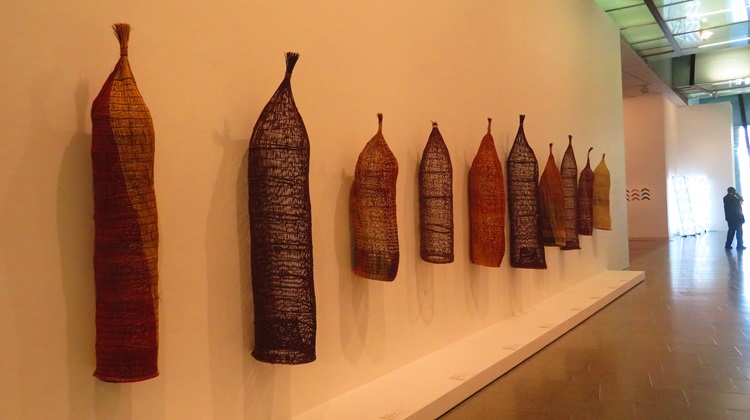
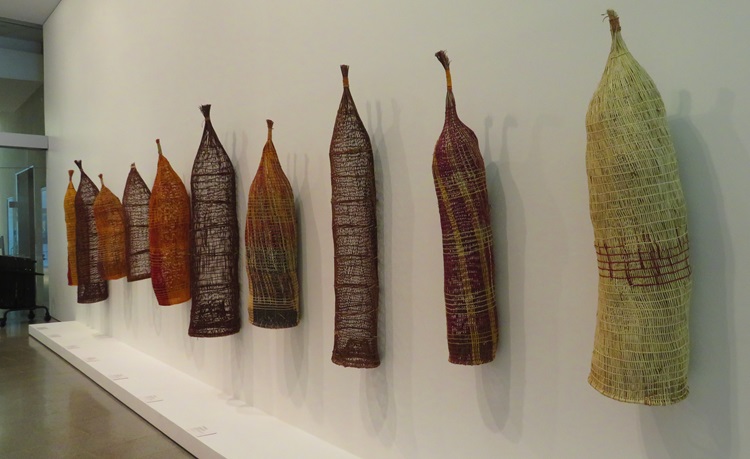
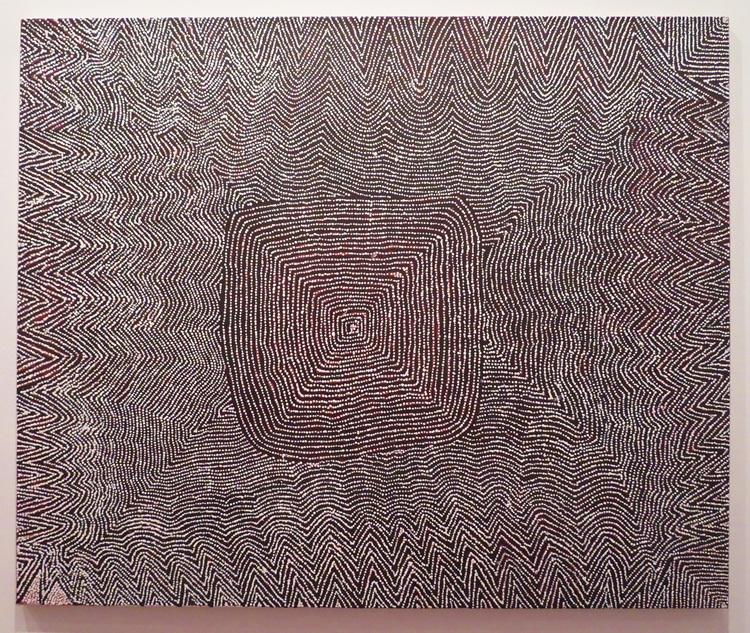
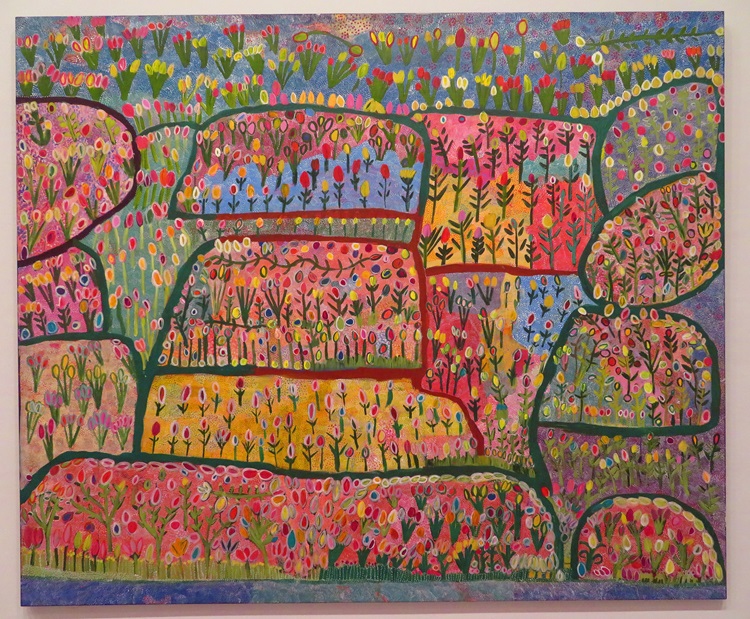
Wurrdha Marra means “Many Mobs” in the Wurundjeri Woi Wurrung language and the name refers to the gallery space as opposed to a time-limited exhibition. It is the NGV’s aspiration that this space will always display a selection of Indigenous art, celebrating Indigenous artists from all over Australia – our coastal, inland and remote lands, including the Tiwi Islands.
Before visiting Melbourne, my research revealed that there were daily tours of this exhibition conducted by the exhibition curator himself. I knew this would be a handy tour to attend otherwise my visit would be my usual superficial wander accompanied by my usual pretty basic internal commentary that runs to “I like that”, “That’s nice”, “Nah, I don’t like that”, and “What the hell is that?”.
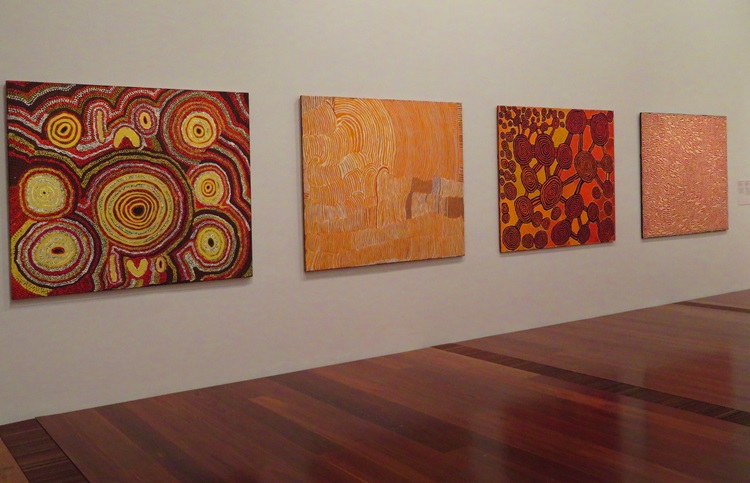
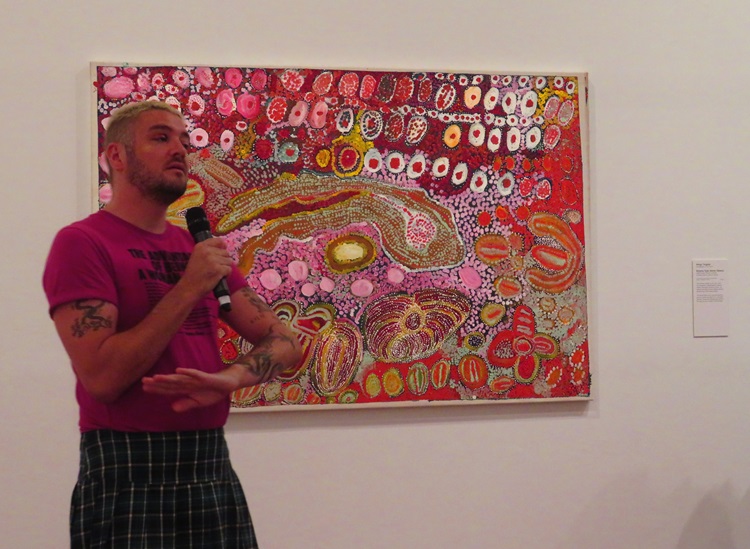
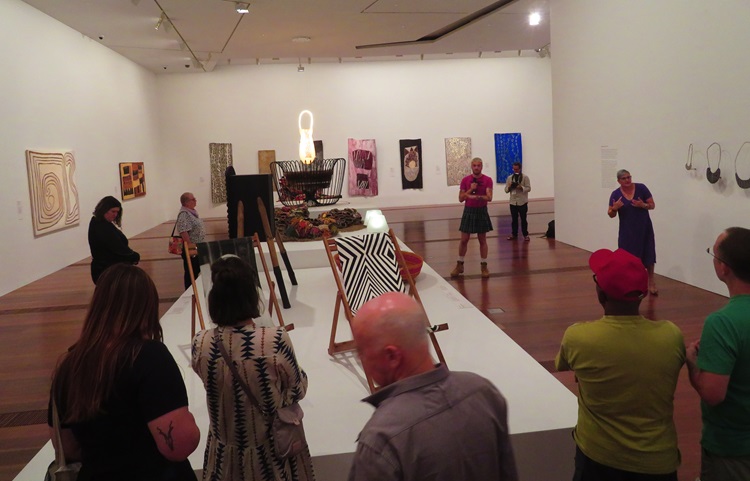
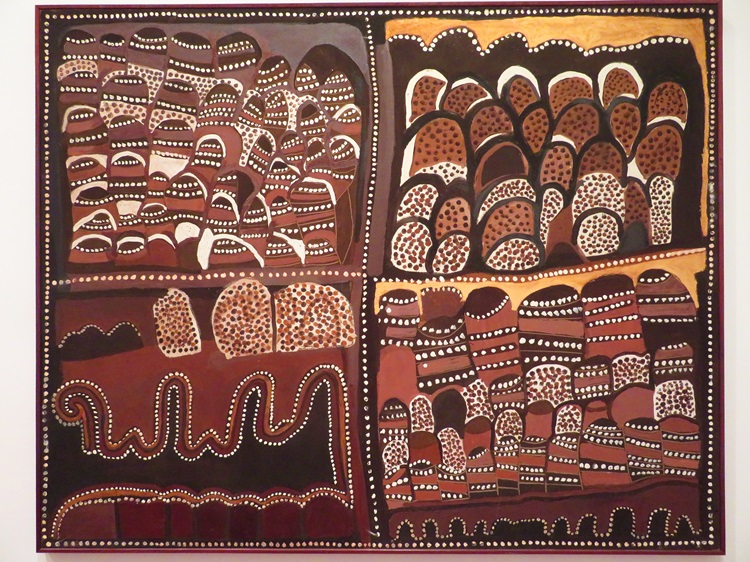
As I was running a little ahead of schedule after visiting the Hermannsburg Watercolour exhibition, I thought I would sneak in and have a preliminary wander through Wurrdha Marra, taking photos of my favourite pieces as I strolled. The diversity of the work struck me immediately. This was not going to be your typical selection of dot paintings. Yes, there were some more traditional works, but their colours were vivid and vibrant – almost leaping off the walls. Then there were woven baskets, sculptures, fabric art, photography, audio-visual installations and much more.
Wandering slowly through the art-lined halls, I found myself attracted to the more ‘standard’ types of artworks. My old-fashioned tastes were dominating yet again, although I suspect we all lean towards some art styles more than others. It was only when I joined the tour a bit later that my ‘normal’ views of art were challenged. And that is always a good thing!
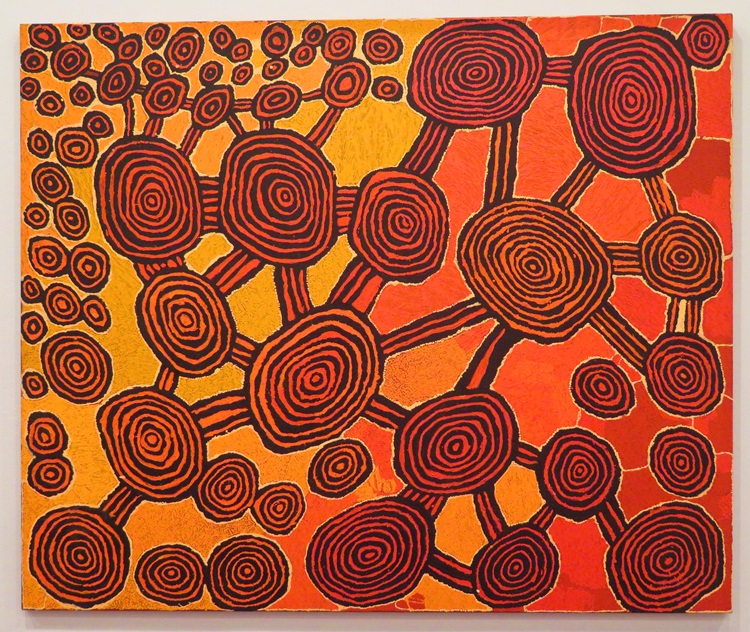
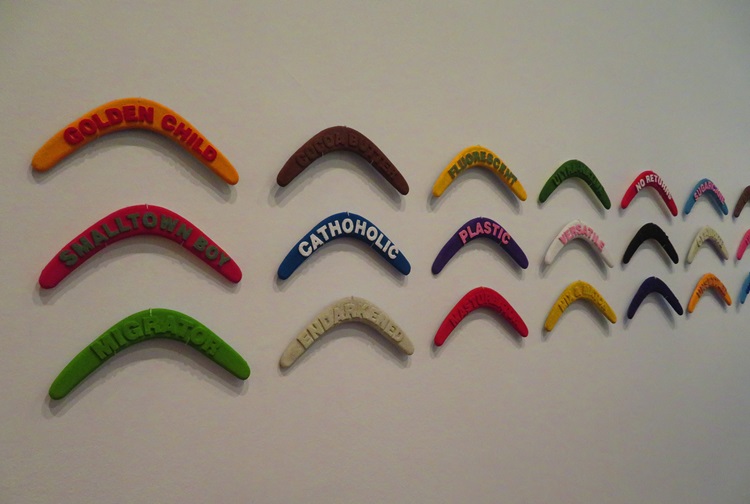
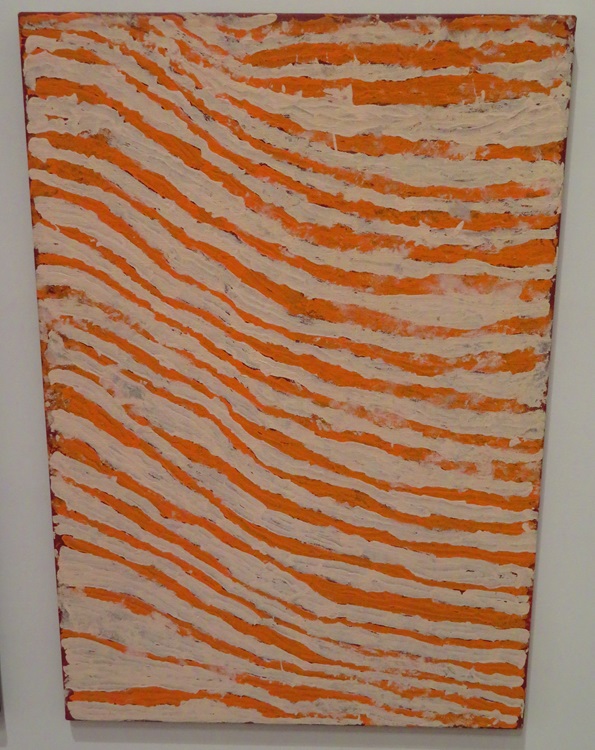
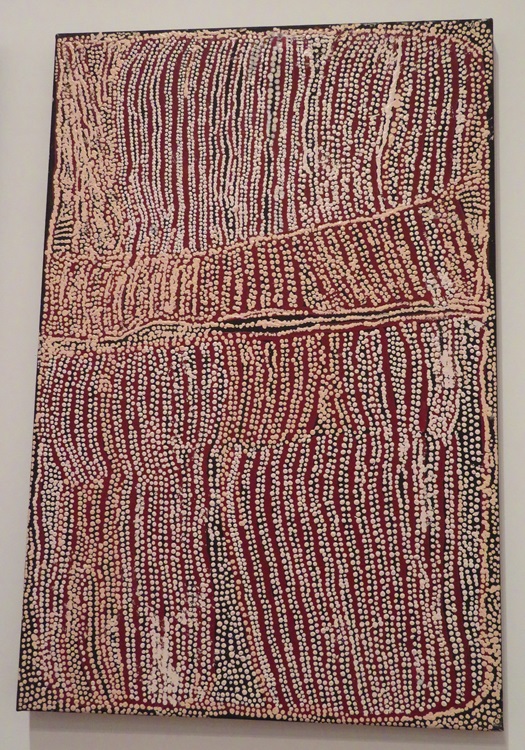
As the appointed time drew near, a small group of us loitered about in the foyer waiting for the tour to commence. When the Curator turned up wearing a kilt, nail polish and eye-shadow, I knew he would challenge my long-held views about what makes art.
As always, I love a guided tour. I suspect I would follow someone over a cliff if they were giving me interesting facts and historic snippets as we toppled off the edge. I love the insight that an expert set of eyes brings to a subject. While I didn’t necessarily love the pieces any more than on my first perusal, now I understood them a little more and what was influencing the artist at the time. What I had missed completely was the gay/queer subtext in a lot of the works. It just goes to show that you can read a lot into artworks or you can miss it completely if your eye isn’t trained in the correct creative nuances.
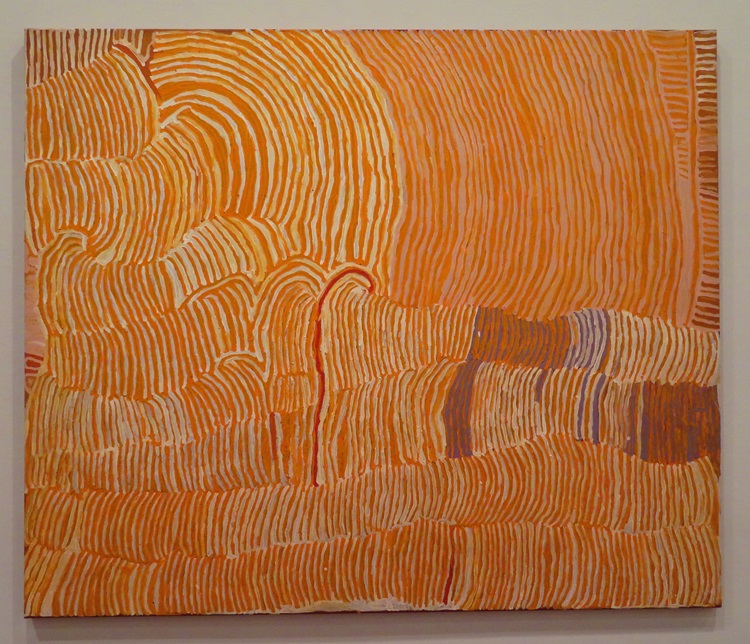
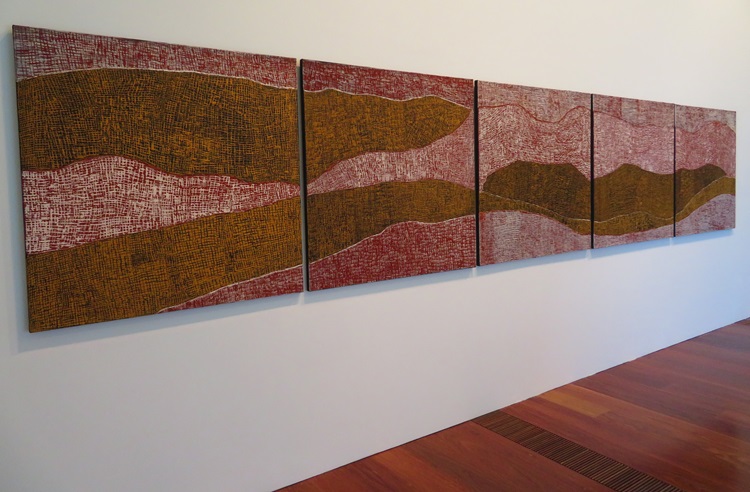
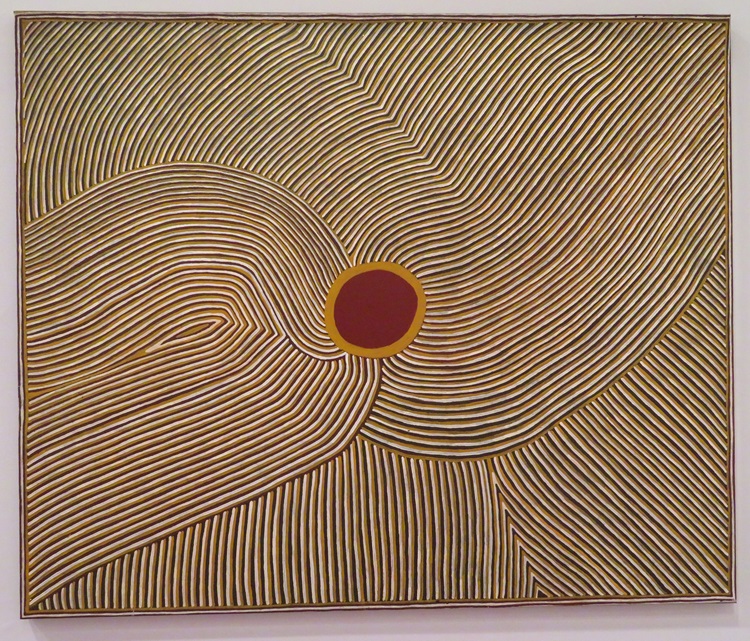
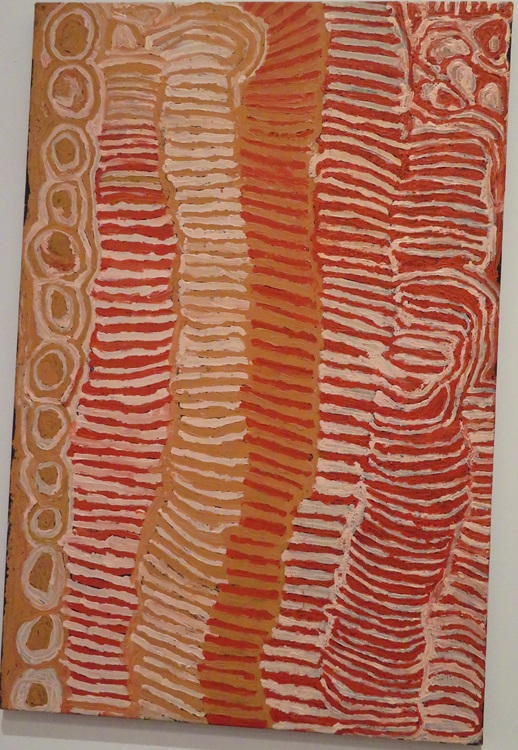
The Curator was so passionate about the collection that I think we could still be standing there, focused on one single piece. For novices like me, the 45-minute time frame was enough of a taster to open my eyes to the deeper meaning of some of the key works. That doesn’t mean that I liked them all and would be happy to have them hanging on my walls (my measuring stick for good art), but I enjoyed the exposure to new artistic styles and themes. I think it is good brain exercise to stretch it to view new things in a different light.
One thing I realised when I was on the tour was that prior to the tour, I had only taken photos of dot paintings. I was just slotting back into my usual artistic biases. The tour encouraged me to broaden both my horizons and my photography.
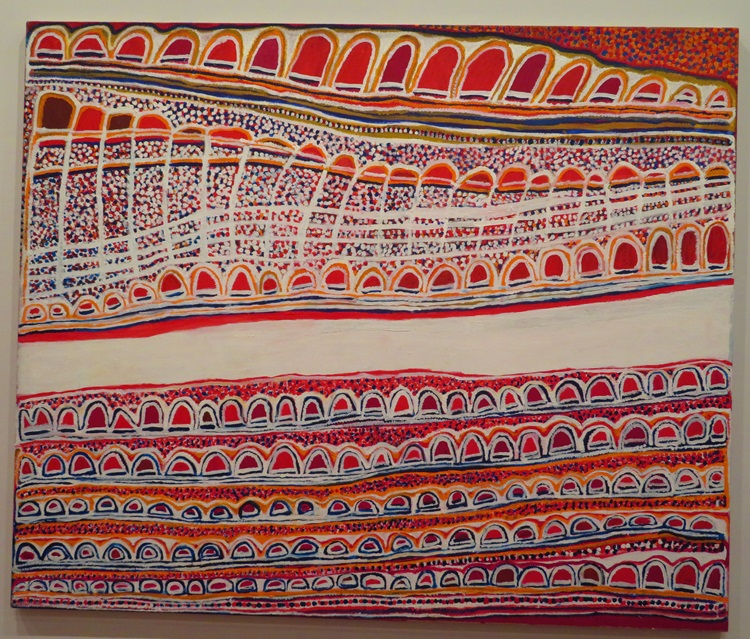
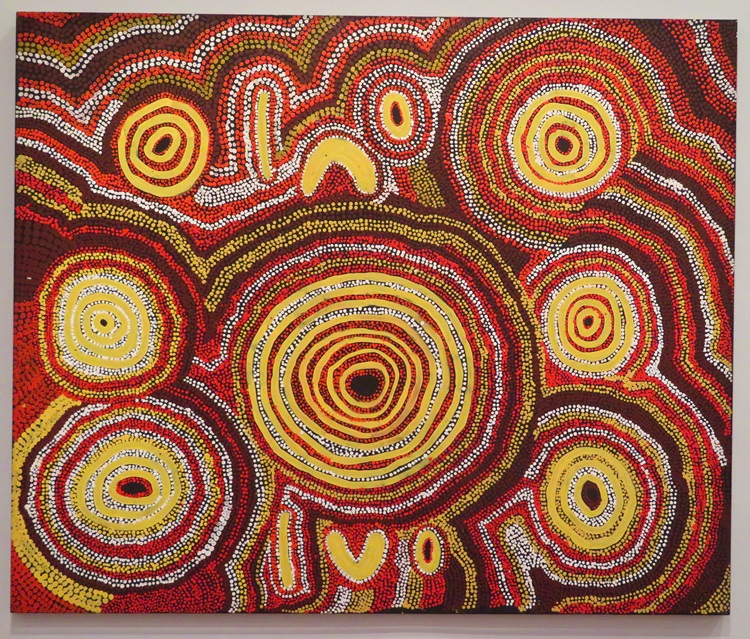
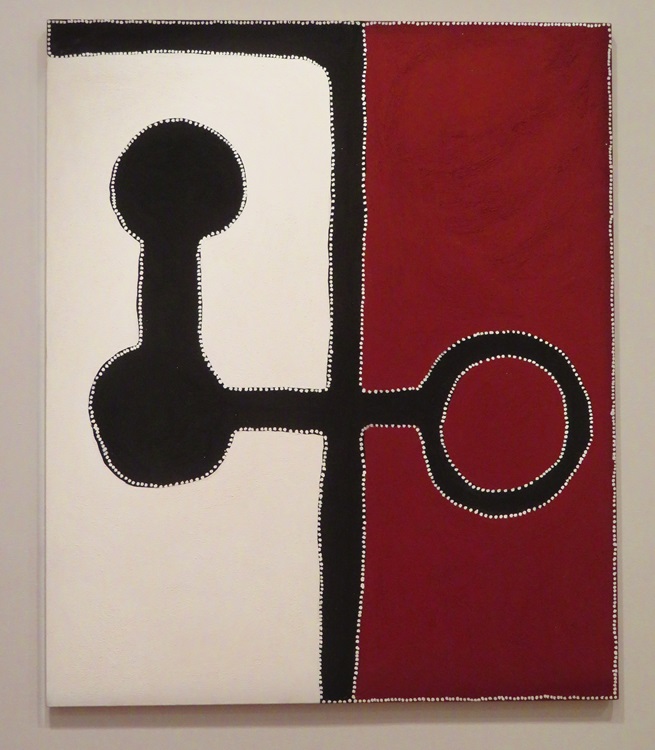
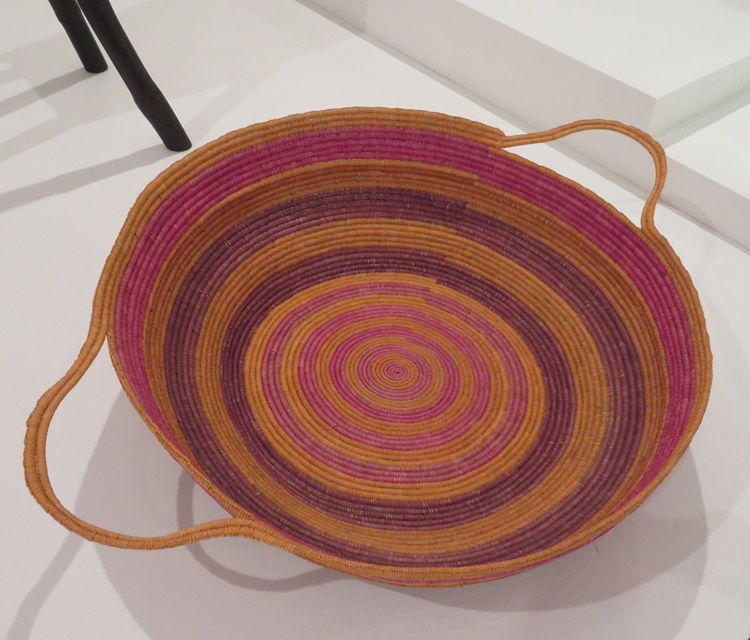
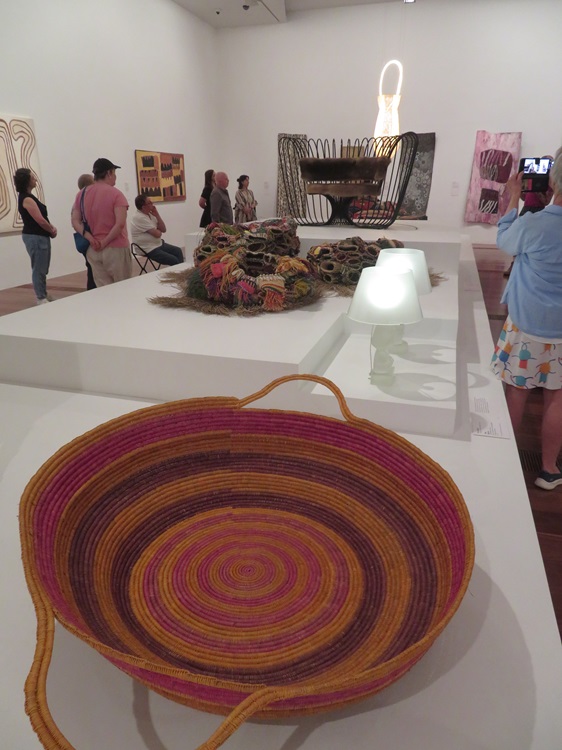
If this style of art doesn’t appeal, there is plenty of other art in the Gallery for your enjoyment. I felt I really only scratched the surface of what could be found on the walls and in the grounds of this building, but with many other things still on my Melbourne must-do list, it was time for me to move on.
Do you have a favourite style of art? Or gallery?
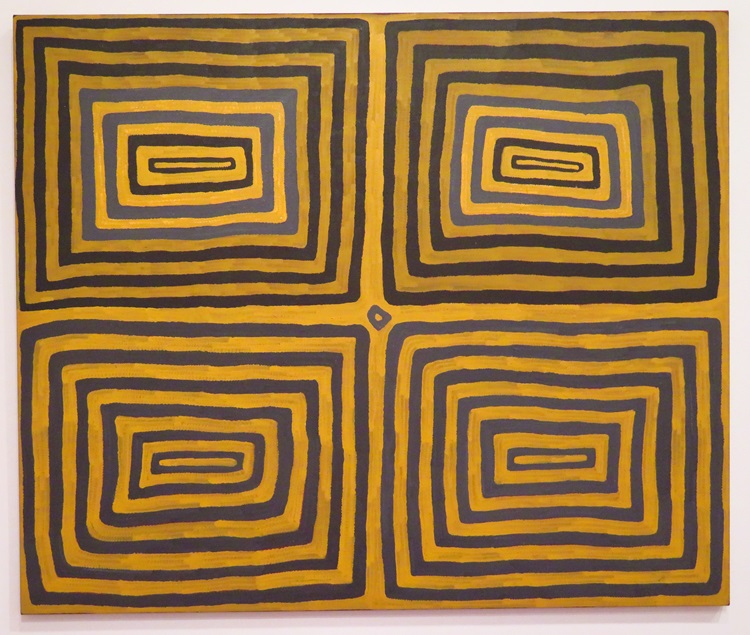
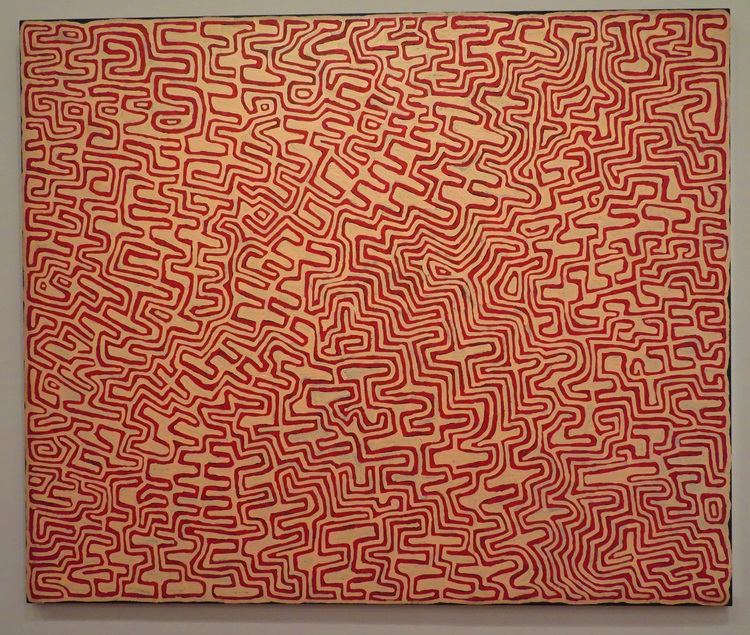
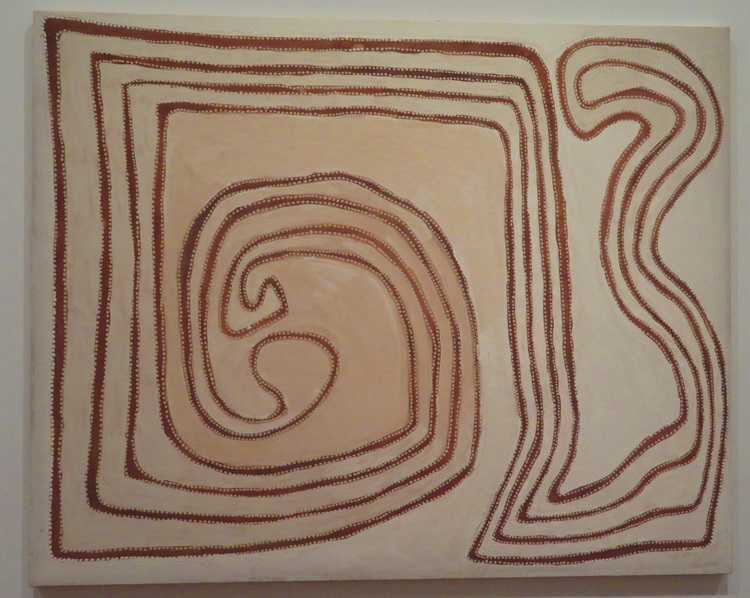
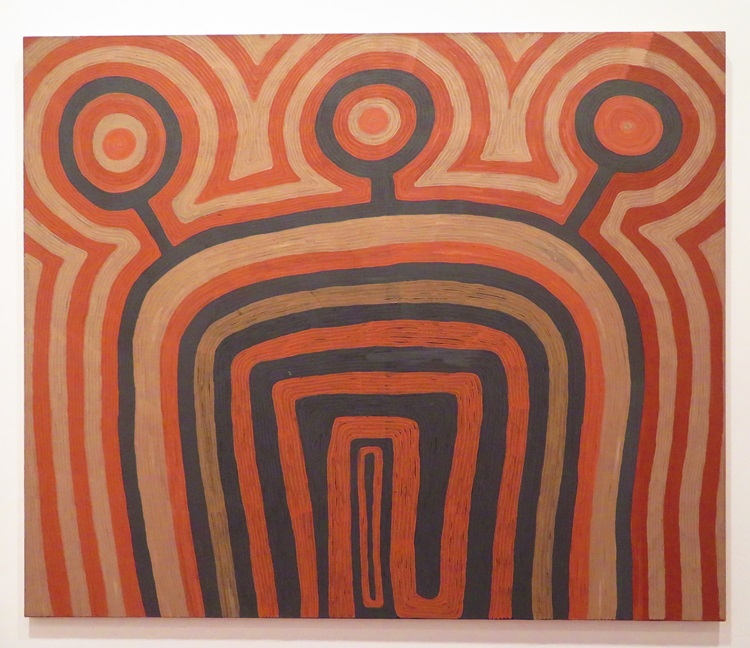
The Basics
What: The Wurrdha Marra gallery tour is free and there is no need to book. Simply wait in the foyer at the appointed time. As well as the Curator, a sign language expert is in attendance.
Where: Federation Square, Melbourne, adjacent to the ACMI centre. A trick for new players is the difference between the NGV at Federation Square and the much larger, NGV on St Kilda Road. The main gallery on St Kilda Rd is also chock-full of mind-boggling art!
When: The Wurrdha Marra Gallery is open daily from 10am-5pm and tours are conducted at 12pm for around 45minutes.
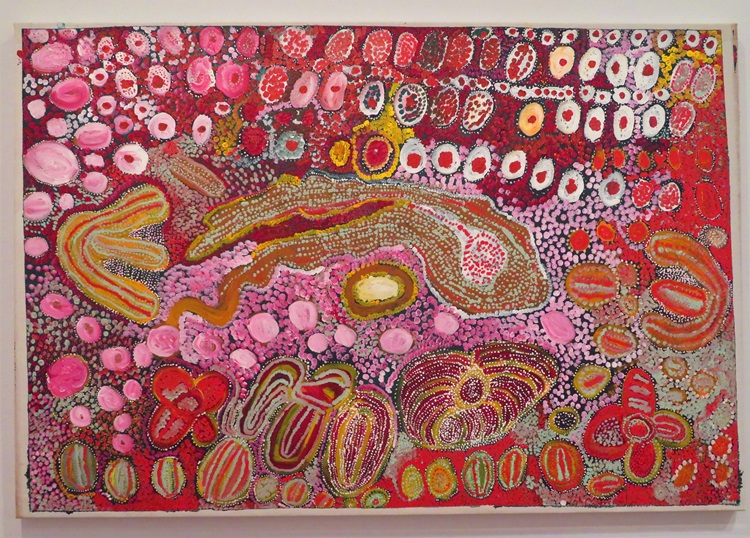
Why: To shake yourself out of old ways of thinking about art.
How: The NGV/Ian Potter Gallery is only a short walk from the centre of Melbourne and the Flinders Street Station.
Who: Art lovers or the art curious. The space is fully accessible for people with mobility issues and they provide fold-up chairs for use as you tour the exhibition. I thought that was a great idea.
Related Posts: For a snapshot of more ‘traditional’ Australian art, check out the beautiful colours and works of Arthur Streeton here.
Related Blogs: For some additional commentary on this exhibition space, have a look at what Walkabout Australia has to say here.
Read About It: If you are interested in reading more about Aboriginal culture and history, grab a copy of Bruce Pascoe’s Dark Emu. It has generated a fair share of controversy, but still gives a good insight and different perspective to the sophistication of Aboriginal life in Australia pre- and post-colonisation.
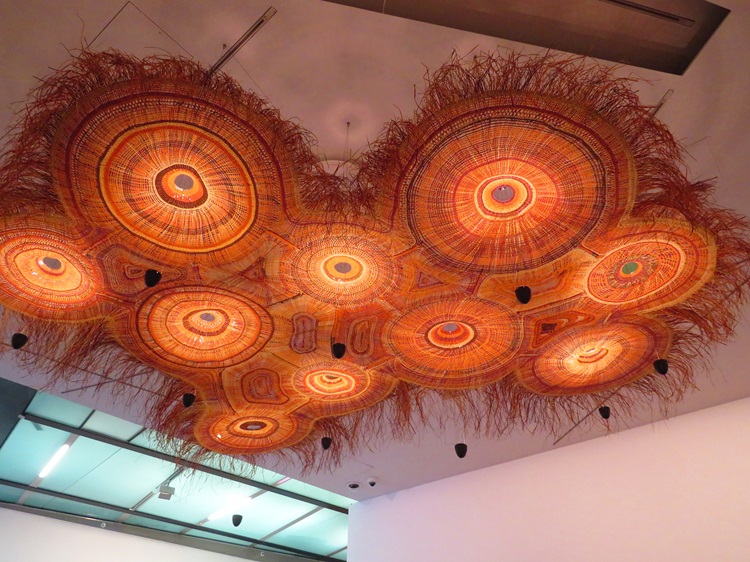
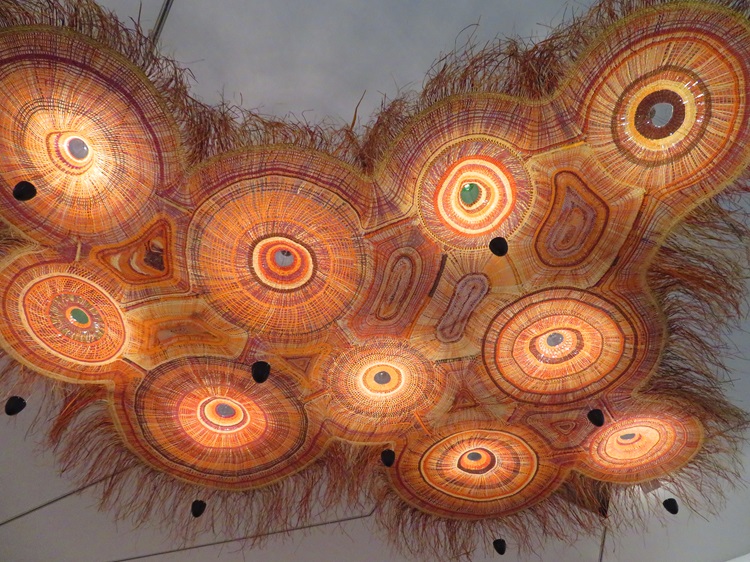
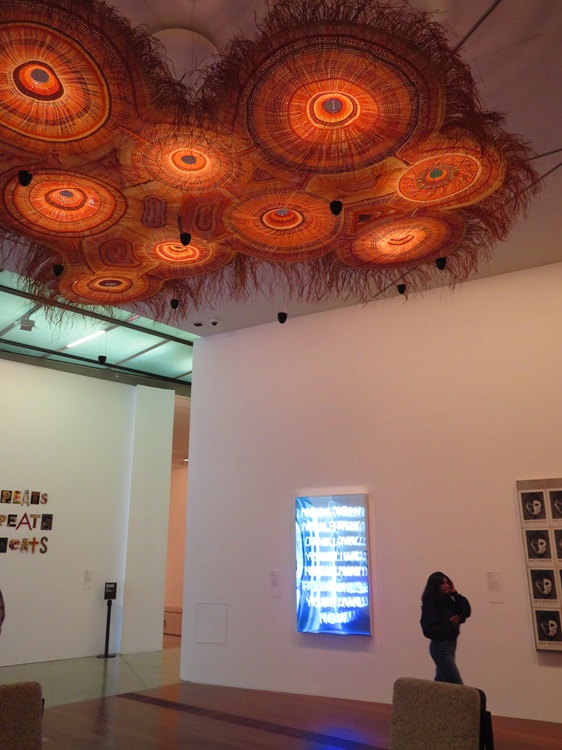
#destinationvictoria #melbourne #travelinspo #ianpottergallery #NGV #freetours #federationsquare #watercolours #artexhibitions #painters #touristattraction #aboriginalartists #indigenousartists #art #contemporaryart #modernart #exhibitions #weaving #audiovisual #wurrdhamarra #guidedtours
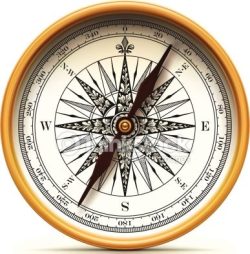
Interesting, Mel. I’m not particularly drawn to indigenous art but some of it is striking. It all comes down to shapes and colours and what pleases the eye, doesn’t it? I would enjoy an explanation too, though it wouldn’t necessarily influence me to like something. The simple fish baskets look great, and are functional. There’s a painting of numerous fields of flowers that I really liked, and those brown bumpy shapes are appealing. You’ve given me some great artworks, so thanks!
LikeLiked by 1 person
My pleasure, Jo. I agree with a lot of your points. I think Indigenous art is often more about the feeling it creates, rather than its beauty. Have a great day.
LikeLiked by 1 person
Well shared.
LikeLiked by 1 person
That’s the first thing I noticed about this artwork — how vivid and vibrant it is. The baskets (at least I think that’s what it is) are beautiful and I find those “things” hanging from the roof – your last couple of photos – very interesting. See, I don’t know anything about art! My favourite art style? Ha, what about vast landscapes and beautiful sea and beach scenes …
LikeLiked by 1 person
Yes, I am a fan of Mother Nature’s artistic talent too!
LikeLiked by 1 person
This is amazing. I have always loved their style and most especially the meaning of their art pieces.
LikeLiked by 1 person
True. Many of their pieces really show their connection to Country.
LikeLiked by 1 person
Like you, I would need an explanation of the meaning or representation of the art. The earth toned artwork in one of the first few pictures is what I think of as Australian Aborginal art, not the bright colours in the later pictures. Interesting tour. Maggie
LikeLiked by 1 person
I prefer the earthier tones too, although now with the wide availability of synthetic colours/paints, these styles seem to be the dominant palettes it seems.
LikeLiked by 1 person
Yes and in some places, like Mexico, they go well, but not everywhere.
LikeLiked by 1 person
True.
LikeLike
These are so good
LikeLiked by 1 person
Yes, I wish I had even a teaspoon of their creative talent. 😉
LikeLiked by 1 person
Storytelling with dots, lines and colour. I really enjoy Aboriginal Art and would’ve enjoyed this exhibition. I wonder if symbolic drawings was used more to pass on traditions than oral communication? You’re right in that all art is about emotions especially for the artist and I suppose those that buy it “feel” the energy from it.
LikeLiked by 1 person
I am not Indigenous, so can’t comment accurately, but I understand that a lot of artists reflect the stories of their Country and their Dreaming. Maybe it is a good way to hand that knowledge down through the generations i.e. through art.
LikeLike
Wonderful handcraft!
LikeLiked by 1 person
Yes, very skilful.
LikeLike
Now this appeals to me a lot lot more than the art museum last week. I like all the warm colours and hand crafted items.
LikeLiked by 1 person
Me too. Most of the pieces are not quite so in-your-face and Yes, that is an artistic term! 🙂
LikeLike
That looks like a cool place. I saw lots of pieces in your pictures that appealed to me. If interior design can be called art, then I just discovered that I love Art Deco interior design. Our Lisbon hotel was decorated this way and I absolutely adored it.
LikeLiked by 2 people
Oh Yes. So many of the buildings in Lisbon works of art. I doubt that you could replicate it in Aus, but it is soooooo right in Portugal.
LikeLiked by 1 person
What a wonderful exhibition! I very briefly studied Aboriginal art at uni years ago and was fascinated to learn about the symbolism, so it’s really interesting to see how the art’s evolving. That light fixture’s stunning.
LikeLiked by 1 person
Yes, you would really notice the changes. Like most art these days ‘anything goes’! 🙂
LikeLiked by 1 person
I love the Aboriginal art. Great showcase.
LikeLiked by 1 person
Many thanks for your kind words. Have a good week.
LikeLiked by 1 person
You’re welcome, you too!
LikeLiked by 1 person
Looks like a wonderful exhibition, thanks for sharing your experience 🙂
LikeLike